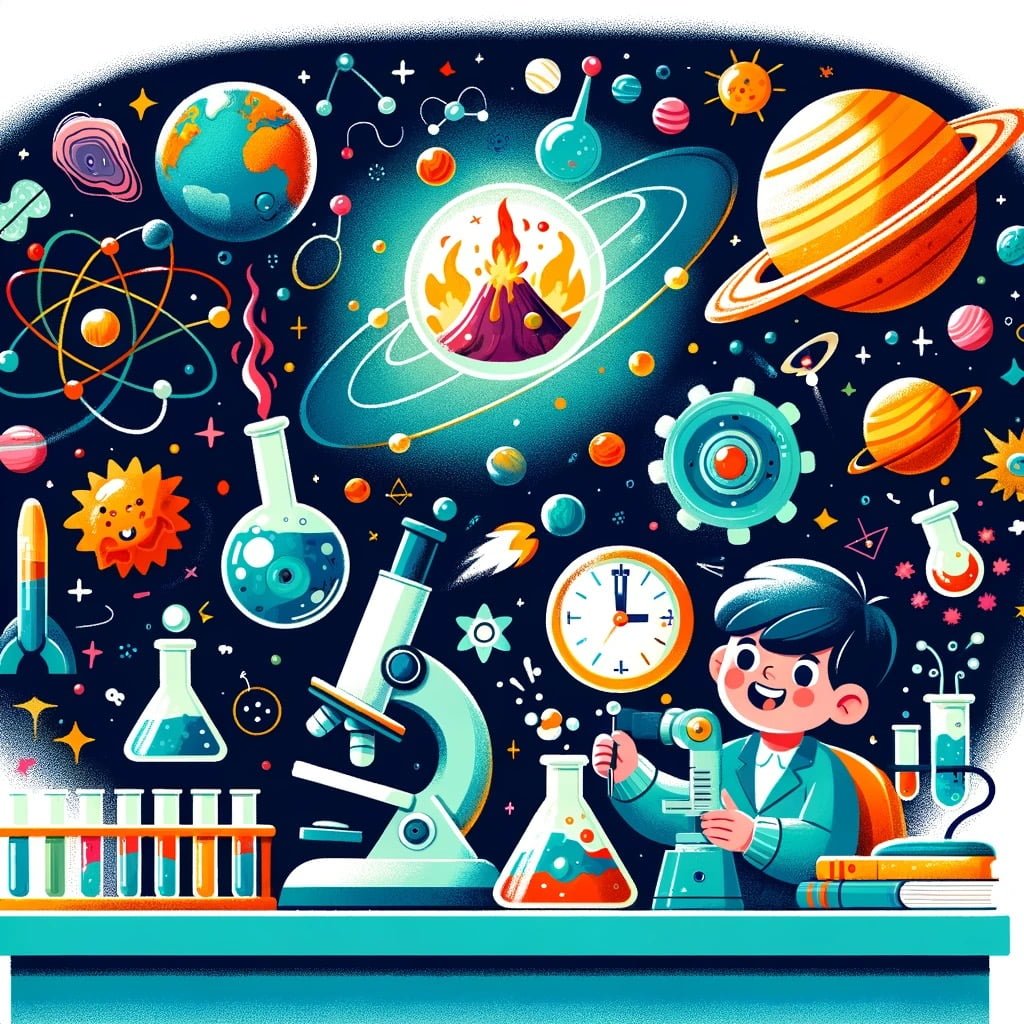Welcome to a world of wonder and discovery, where the magic of **Chemistry Facts For Kids** comes to life! Dive into the realm of Crazy Chemistry and explore a myriad of fascinating facts that will ignite curiosity and spark excitement in young minds. From explosive reactions that light up the room to colorful flames that mesmerize and inspire, each fun fact unveils the captivating world of chemistry in a fun and engaging way. Join us on this incredible journey as we unravel the mysteries of polymers, dancing raisins, invisible ink secrets, and mega-magnets, all while basking in the awe-inspiring wonders of the sweet chemistry of candy. Get ready to embark on a thrilling adventure filled with educational insights and magical moments as we uncover the enchanting world of Chemistry Facts For Kids!
Chemistry Facts For Kids
1. Explosive Reactions

For younger kids: Mixing certain chemicals together can cause a big explosion!
For older kids: Combining certain chemicals with a specific amount of heat and pressure can result in a spectacular chemical explosion, demonstrating the powerful energy stored in chemical bonds.
Detailed explanation:Chemistry Facts For Kids are always fascinating, especially when it comes to explosive reactions. One of the most well-known examples of an explosive reaction is the combustion of gunpowder. Gunpowder is a mixture of potassium nitrate, charcoal, and sulfur, which when ignited undergoes a rapid chemical reaction that releases a large amount of energy in the form of heat and gas. This sudden release of energy causes the gunpowder to explode, creating a loud bang and generating a significant amount of force.
Explosive reactions like the combustion of gunpowder are not only exciting to witness, but they also demonstrate some key concepts in chemistry. For example, the concept of energy transfer is central to understanding explosive reactions. In the case of gunpowder, the chemical bonds within the potassium nitrate, charcoal, and sulfur molecules store energy. When the gunpowder is ignited, these bonds break, releasing the stored energy as heat and gas. This process happens very quickly, resulting in an explosive release of energy.
Furthermore, explosive reactions also illustrate the importance of chemical reactions in our everyday lives. From the combustion of gasoline in car engines to the detonation of fireworks, chemical reactions are responsible for many of the conveniences and entertainments we enjoy. Studying explosive reactions not only provides insights into the fundamental principles of chemistry, but also fosters a sense of wonder and curiosity about the world around us.
In conclusion, Chemistry Facts For Kids can be both educational and entertaining, especially when exploring explosive reactions. By understanding the science behind these phenomena, children can develop a deeper appreciation for the role of chemistry in shaping the world we live in. So next time you witness an explosive reaction, remember the key principles of energy transfer and chemical reactions at play.
Chemistry Facts For Kids
2. Colorful Flames
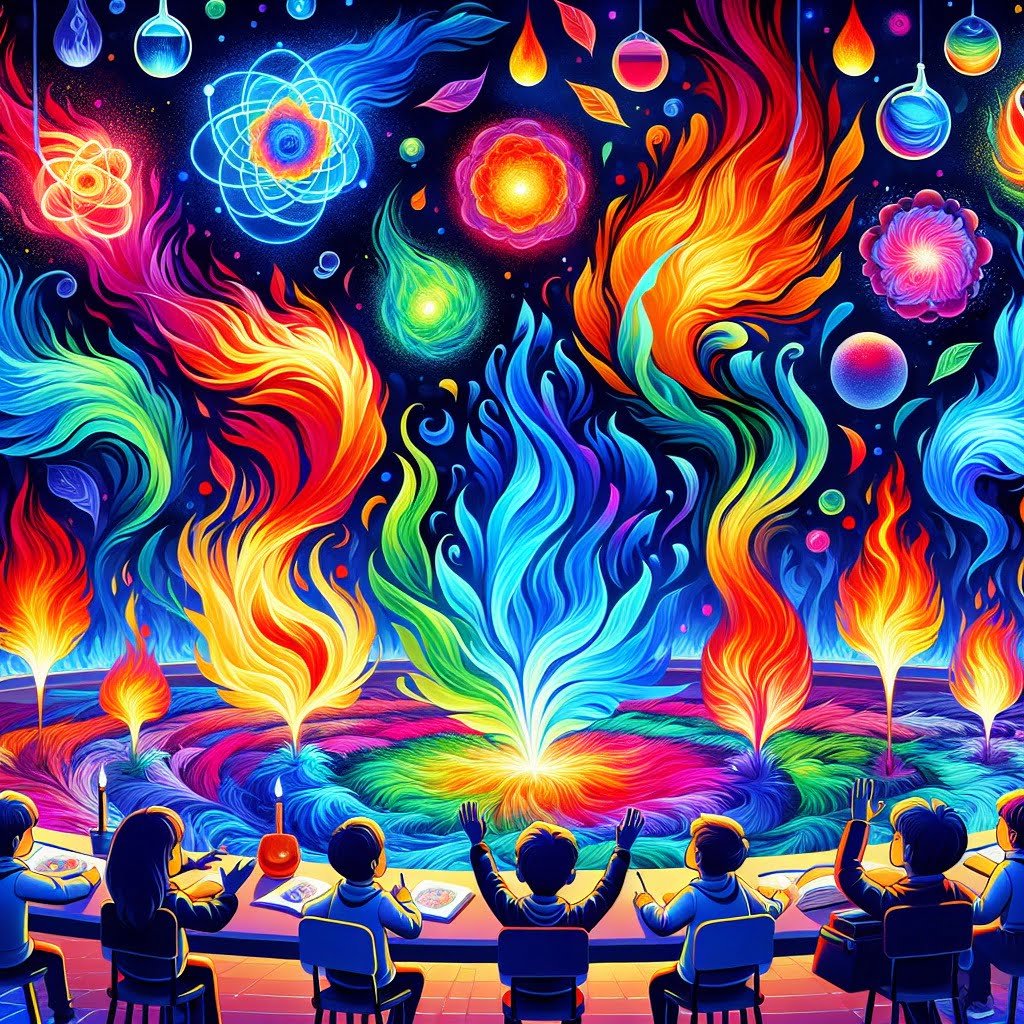
For younger kids: Fire can be blue, green, or purple with the right chemicals!
For older kids: Different elements produce distinctive colors when burned, leading to amazing displays of green from copper, red from strontium, and blue from copper chloride.
Detailed explanation:Have you ever wondered why flames can sometimes be different colors? This phenomenon is actually due to some fascinating Chemistry Facts For Kids. When certain elements are heated up, the electrons in their atoms become excited and jump to higher energy levels. As these excited electrons return to their original energy levels, they emit light in the form of specific wavelengths, which correspond to different colors.
For example, when we burn copper, the flames appear green because the excited electrons in the copper atoms emit light at a specific wavelength that corresponds to the color green. Similarly, when we burn potassium, the flames appear purple because the excited electrons in the potassium atoms emit light at a wavelength that corresponds to the color purple.
This colorful display of flames can also be seen in fireworks. Fireworks contain various metal salts, each of which emits a different color when burned. For example, strontium salts produce red flames, while barium salts produce green flames. By carefully choosing the metal salts used in fireworks, pyrotechnicians can create stunning displays of colorful flames in the night sky.
Understanding the Chemistry Facts For Kids behind colorful flames not only adds a sense of wonder to everyday phenomena but also has practical applications. For example, scientists can use flame tests to identify unknown substances by observing the color of the flames they produce when burned. So, the next time you see a colorful flame, remember that it’s all thanks to the fascinating world of chemistry at work.
Chemistry Facts For Kids
3. Magic of Polymers
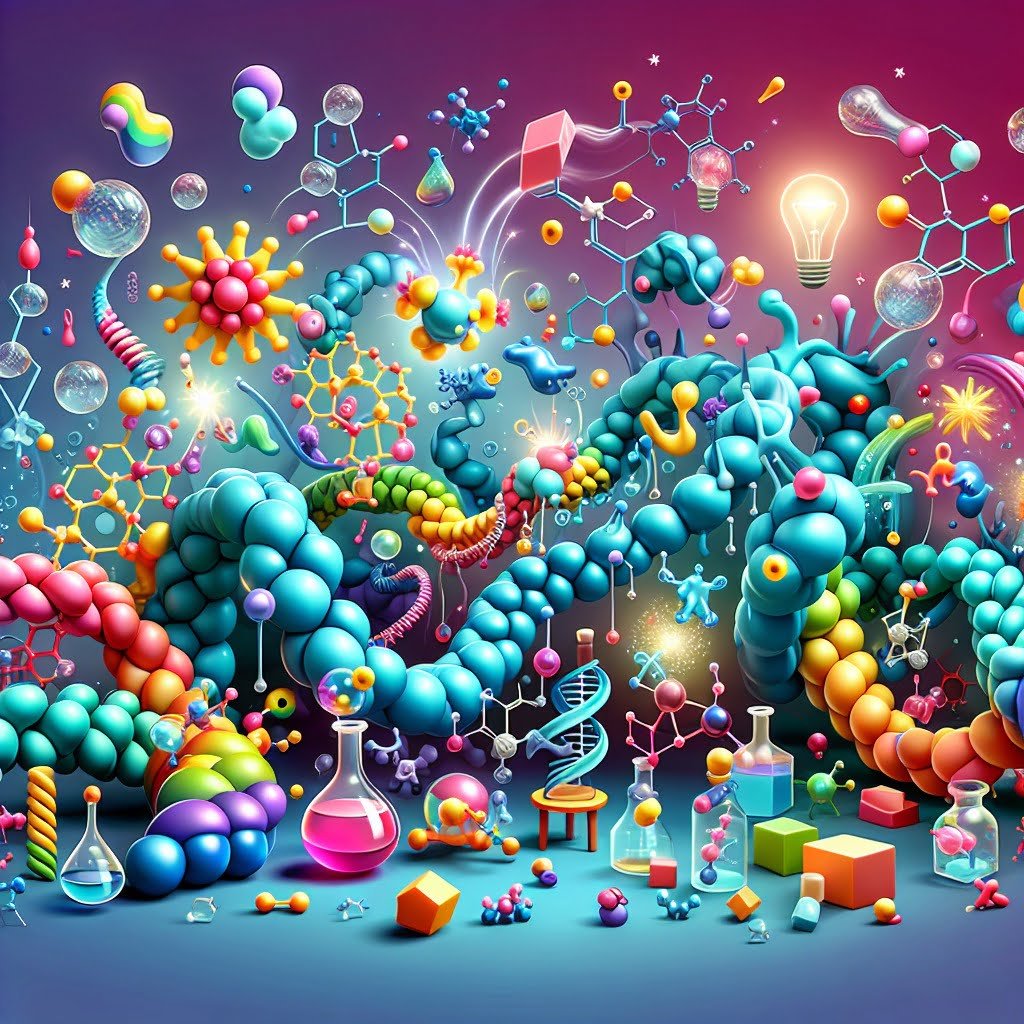
For younger kids: Polymers are like magic building blocks that can make super stretchy slime!
For older kids: Polymers are long chains of molecules that give them unique properties, from flexible plastic to tough Kevlar and stretchy rubber.
Detailed explanation:Polymers are large molecules made up of repeating units called monomers. These molecules are incredibly versatile and can be found in a wide range of everyday objects, from plastic bottles to rubber tires. The magic of polymers lies in their unique chemical structure, which allows them to be tailored to have specific properties and characteristics.
One of the most fascinating aspects of polymers is their ability to be both flexible and strong. This is due to the arrangement of the monomers within the polymer chain, which can be manipulated to create materials with varying degrees of flexibility and tensile strength. For example, the polymer used to make a rubber band is designed to be stretchy and elastic, while the polymer used to make a plastic water bottle is rigid and durable.
Another remarkable quality of polymers is their ability to conduct electricity. Some polymers, known as conductive polymers, have been developed that can carry an electrical current. This unique property has led to the creation of flexible electronic devices, such as bendable screens and wearable technology.
In conclusion, polymers are a fascinating area of study in chemistry. By understanding the chemical makeup of polymers, scientists and engineers can create new materials with a wide range of uses and applications. Whether it’s creating biodegradable plastics or designing advanced medical implants, the possibilities are endless when it comes to the magic of polymers. Chemistry Facts For Kids is a fun way to introduce young learners to the world of polymers and inspire them to explore the exciting field of chemistry further.
Chemistry Facts For Kids
4. Explosive Popcorn

For younger kids: Did you know that popcorn pops because of chemistry?
For older kids: The moisture inside a popcorn kernel turns to steam when heated, building pressure until it explosively pops the kernel, all due to a chemical reaction.
Detailed explanation:Popcorn, a beloved snack for many, is not only delicious but also a fascinating example of chemistry in action. When popcorn kernels are heated, the moisture inside turns into steam. The steam builds pressure within the kernel until it finally bursts open, creating the fluffy white treat we all know and love. This process is known as popping, and it is a result of a complex chemical reaction taking place inside each kernel.
The KEYWORD “Chemistry Facts For Kids” become apparent when we consider the specific chemical compounds involved in the popping of popcorn. The three main components of a popcorn kernel are water, starch, and protein. As the kernel is heated, the water inside it turns into steam, expanding and building pressure within the hard outer shell. The high temperature also causes the starch to gelatinize, turning into a soft, pliable substance. Finally, the protein in the kernel undergoes Maillard reactions, creating the golden-brown color and delicious aroma of popped popcorn.
This simple yet fascinating phenomenon not only provides us with a tasty snack but also serves as a fun way to introduce children to the wonders of chemistry. By explaining the science behind popcorn popping, kids can learn about concepts such as heat transfer, phase changes, and chemical reactions in an engaging and accessible manner.
In conclusion, popcorn popping is a perfect example of how chemistry facts for kids can be both educational and entertaining. By understanding the chemical processes involved, we can truly appreciate the magic that happens inside each tiny kernel as it transforms into a fluffy, delicious snack.
Chemistry Facts For Kids
5. Glow-in-the-Dark Fun
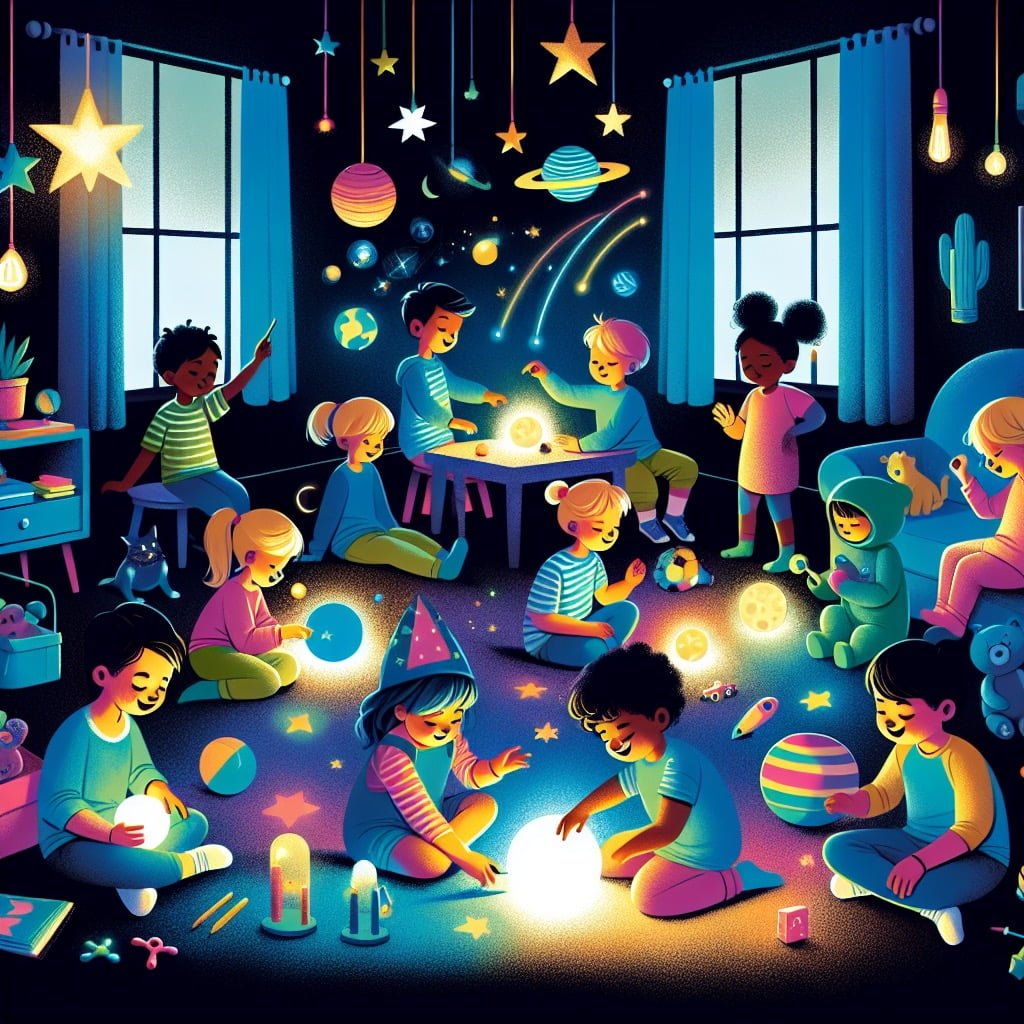
For younger kids: Some things can glow in the dark because of special chemistry!
For older kids: Glow-in-the-dark items contain phosphors that emit light after being charged with ultraviolet energy, creating a luminescent effect through a chemical reaction.
Detailed explanation:One of the most fascinating applications of chemistry that captivates kids and adults alike is the phenomenon of glow-in-the-dark. This magical glow, often seen in stickers, toys, and even clothing, is created through a process called phosphorescence.
Phosphorescence is a type of photoluminescence where a substance absorbs light energy and then slowly releases it as visible light over a period of time. This process is made possible by certain chemical compounds known as phosphors, which are able to store and emit light in this way. In the case of glow-in-the-dark products, the phosphors are usually mixed into a translucent material that allows light to pass through and activate the phosphorescent effect.
One common example of a phosphor used in glow-in-the-dark products is zinc sulfide, which absorbs and then re-emits light in the green part of the spectrum. When exposed to light, the zinc sulfide molecules become excited and store this energy temporarily. As the molecules return to their normal state, they release the stored energy as a green glow that can last for several hours.
This captivating display of chemistry in action is not only mesmerizing to watch but also serves as a fun way to teach kids about the science behind glow-in-the-dark materials. By understanding the relationship between light absorption and emission, children can gain a greater appreciation for the intricate mechanisms that drive this enchanting phenomenon. Chemistry facts for kids, such as the science behind glow-in-the-dark products, can spark curiosity and inspire a lifelong interest in the wonders of the natural world.
Chemistry Facts For Kids
6. Sweet Chemistry of Candy
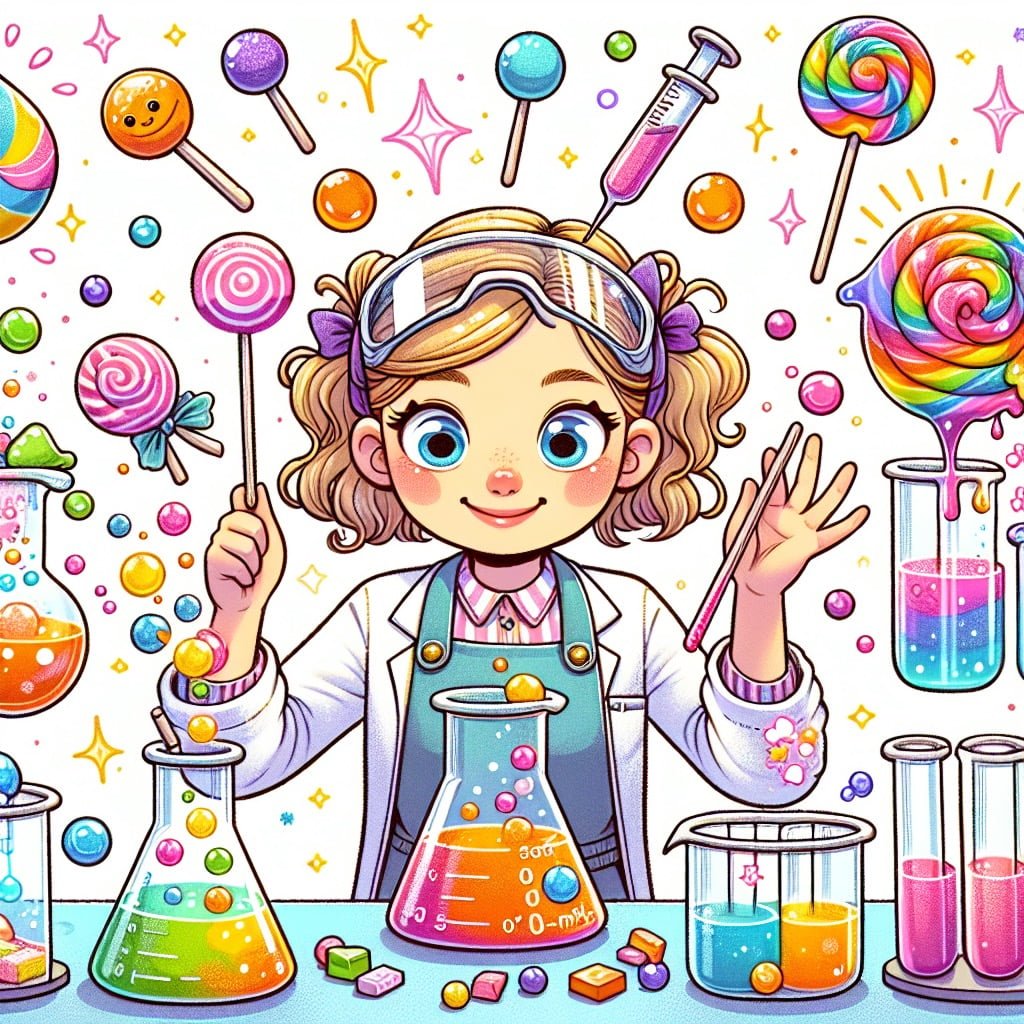
For younger kids: Candy tastes so delicious thanks to special chemistry!
For older kids: The perfect combination of ingredients and chemical reactions gives candy its sweetness, sourness, or fizzy sensations that we love.
Detailed explanation:Candy is a delicious treat enjoyed by people of all ages around the world. But have you ever stopped to think about the Chemistry Facts For Kids behind the sweetness of candy? The science behind what makes candy taste so good is truly fascinating.
One of the key components of candy is sugar, which is a type of carbohydrate made up of carbon, hydrogen, and oxygen atoms. When we eat candy, our taste buds detect the sweetness of the sugar molecules. This reaction occurs because our taste buds are equipped with receptors that bind to specific molecules, such as sugars, triggering a signal to the brain that we are experiencing something sweet.
In addition to sugar, candy often contains other ingredients such as flavorings, colorings, and preservatives. These ingredients also have their own unique chemical compositions that contribute to the overall taste and appearance of the candy. For example, artificial flavors are created using a combination of different chemicals that mimic natural flavors like fruit or mint.
The process of making candy also involves Chemistry Facts For Kids. For instance, when making hard candy, sugar is heated to a specific temperature to create a syrup-like consistency. As the syrup cools, sugar molecules organize themselves into a crystalline structure, giving the candy its hard texture. Similarly, when making caramel, sugar is heated with butter and cream, causing a series of chemical reactions that produce the rich and creamy flavor we associate with caramel.
In conclusion, the sweet chemistry of candy is a perfect example of how scientific principles can be applied to create something delicious and enjoyable. From the molecular structure of sugar to the complex reactions that occur during candy making, chemistry plays a crucial role in the world of confectionery.
Chemistry Facts For Kids
7. Invisible Ink Secrets

For younger kids: You can write secret messages with invisible ink using chemistry!
For older kids: Invisible ink relies on substances that become visible under specific conditions, such as heat or exposure to ultraviolet light, revealing the hidden message.
Detailed explanation:Invisible ink is a fascinating concept that has been used for centuries as a way to communicate secretly or securely. Many people associate invisible ink with spies and secret agents, but the truth is that this technique is quite simple and can be used by anyone. In fact, invisible ink can be made using everyday household items, and its creation relies on basic chemistry principles.
One of the most common invisible ink recipes involves lemon juice. The acidity of the lemon juice weakens the paper, causing it to burn at a lower temperature than the surrounding paper. When the paper is heated, the lemon juice darkens and becomes visible. This technique is often used in fun science experiments and activities for kids, demonstrating the magic of chemistry in a simple and engaging way.
Another popular invisible ink recipe involves using baking soda and water. When this mixture is applied to paper, it dries completely clear, making any writing or drawing invisible. However, when a solution of grape juice or vinegar is brushed over the paper, the writing magically appears. This reaction occurs due to the acidity of the grape juice or vinegar reacting with the basic baking soda, causing a color change that makes the writing visible.
Overall, invisible ink is a great way to pique kids’ interest in chemistry. By engaging in hands-on activities and experiments like creating invisible ink, children can learn about chemical reactions, acids and bases, and the scientific method in a fun and interactive way. Chemistry facts for kids can be both educational and entertaining, and invisible ink is just one example of how science can be made exciting and accessible to young learners.
Chemistry Facts For Kids
8. Crazy Chemical Clocks

For younger kids: Chemical reactions can create a magical clock that changes color!
For older kids: Chemical clock reactions are fascinating experiments that demonstrate complex chemical processes producing time-dependent color changes, showcasing the dynamic nature of chemistry.
Detailed explanation:Chemistry Facts For Kids can be both fascinating and fun, especially when exploring the world of crazy chemical clocks. These unique timepieces rely on chemical reactions to keep time, rather than traditional gears and springs.
One popular example of a chemical clock is the iodine clock reaction. This reaction involves mixing potassium iodide, hydrogen peroxide, and sulfuric acid. Initially, the mixture is clear, but as the reaction progresses, it suddenly changes color, signaling that a specific amount of time has passed. By carefully controlling the concentrations of the reactants, scientists can adjust the timing of this color change to create a clock-like effect.
Another intriguing example of a chemical clock is the Briggs-Rauscher reaction. This reaction involves a series of oscillating color changes, creating a mesmerizing display of patterns. The reaction relies on the oxidation of manganese(II) ions by bromate ions in acidic solution. The oscillations in color occur due to the complex interplay between different chemical species in the reaction mixture.
Chemical clocks not only serve as engaging demonstrations of chemical principles, but they also have practical applications in fields such as biology and materials science. For example, chemical clocks can be used to study reaction kinetics and discover new ways to control and manipulate chemical reactions.
In conclusion, Chemistry Facts For Kids can be brought to life through the exploration of crazy chemical clocks. These unique timepieces showcase the dynamic and colorful world of chemical reactions, while also demonstrating important scientific concepts in a fun and interactive way.
Chemistry Facts For Kids
9. Dancing Raisins

For younger kids: Raisins can dance in fizzy drinks thanks to chemistry!
For older kids: The carbon dioxide bubbles in a carbonated drink latch onto the raisin’s wrinkles, making them buoyant, and causing them to “dance” due to a chemical reaction.
Detailed explanation:One fun and interactive experiment that demonstrates a fascinating aspect of chemistry is the Dancing Raisins experiment. This experiment is a favorite among kids because it involves simple household items and produces a visually captivating result.
To conduct the Dancing Raisins experiment, you will need a clear glass or container, carbonated soda (such as soda water or Sprite), and raisins. The KEYWORD, Chemistry Facts For Kids, comes into play as we delve into the science behind this exciting experiment.
When you drop raisins into a glass of carbonated soda, the raisins initially sink to the bottom. This is because the raisins are denser than the liquid. However, as the carbonation in the soda releases carbon dioxide gas bubbles, these bubbles adhere to the rough surface of the raisins. The bubbles then lift the raisins up through the liquid.
The raisins appear to dance as they move upwards due to the buoyancy of the gas bubbles. Once the bubbles reach the surface and pop, the raisins lose their buoyancy and sink back down. This cycle of rising and sinking creates the illusion of dancing raisins in the glass.
This experiment is not only entertaining, but it also provides a great opportunity to discuss concepts such as density, buoyancy, and gas solubility with children. By engaging in hands-on activities like the Dancing Raisins experiment, kids can gain a better understanding of these KEYWORD, Chemistry Facts For Kids, in a fun and memorable way.
Chemistry Facts For Kids
10. Mega-Magnets in Chemistry
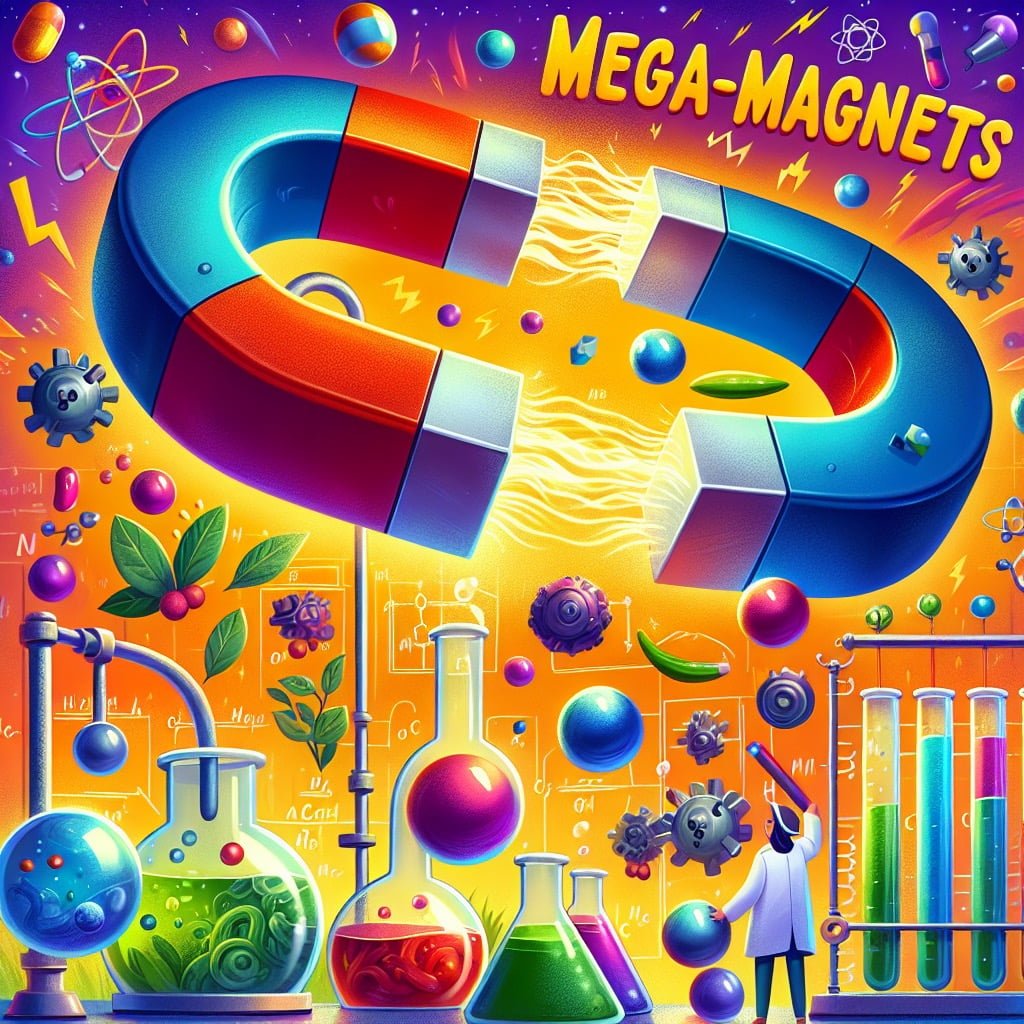
For younger kids: Magnets can do amazing things in cool chemistry experiments!
For older kids: Powerful electromagnets use electrically charged coils to produce mega-magnetic fields, allowing them to lift heavy objects and demonstrate magnetic principles in astounding ways.
Detailed explanation:In the world of chemistry, mega-magnets play a crucial role in many different processes. These super strong magnets are essential in various experiments and techniques used by chemists to study and manipulate molecules on a microscopic level. One of the most common uses of mega-magnets in chemistry is in nuclear magnetic resonance (NMR) spectroscopy.
NMR spectroscopy is a powerful analytical technique that allows chemists to determine the structure and composition of molecules. By applying a strong magnetic field to a sample, the nuclei of certain atoms in the molecule align with the field. When radio frequency pulses are then applied, the nuclei absorb energy and become excited, and when they relax back to their original state, they release this energy in the form of radio waves. By analyzing the frequency and intensity of these signals, chemists can gain valuable information about the molecular structure and environment.
Another important application of mega-magnets in chemistry is in magnetic resonance imaging (MRI). MRI is a non-invasive medical imaging technique that uses powerful magnets to create detailed images of the inside of the human body. By applying a strong magnetic field and radio frequency pulses to the body, MRI machines can generate clear images of soft tissues, organs, and even blood vessels. This technology has revolutionized the field of medicine, allowing doctors to diagnose and treat a wide range of conditions.
In conclusion, mega-magnets are essential tools in the field of chemistry, enabling chemists to study molecules and materials in ways that were not possible before. By harnessing the power of these super strong magnets, scientists can unlock the secrets of the molecular world and make groundbreaking discoveries. Chemistry Facts For Kids are sure to be fascinated by the amazing applications of mega-magnets in the world of chemistry.
Did You Know?
Did you know that the ‘invisibility cloak’ in Harry Potter uses chemistry-inspired principles to create the illusion of invisibility?
Summary of Chemistry Facts For Kids
In a world filled with limitless wonders and fascinating mysteries, exploring the realm of chemistry can truly be a mind-blowing experience for both kids and adults alike. By uncovering the captivating world of Chemistry Facts For Kids, you will embark on a journey filled with excitement, discovery, and endless possibilities.
From colorful chemical reactions to explosive results of mixing acids and bases, learning about chemistry is not only entertaining but also incredibly educational. By delving into the fun facts and mind-boggling concepts of chemistry, young minds can cultivate a sense of curiosity and wonder that will shape their understanding of the world around them.
Moreover, delving into the world of chemistry can spark a passion for science that may lead to conducting your own experiments and exploring the boundless opportunities that this field has to offer. So, why not indulge in the thrilling world of Chemistry Facts For Kids and unlock the door to a world of endless fun and exploration? Prepare to be amazed, inspired, and entertained as you delve into the enchanting world of chemistry!
Sources and additional information for Chemistry Facts For Kids
WikipediaBritannicaScienceDirectNatureScientific AmericanNew ScientistNational Science FoundationScience NewsThe Royal SocietyLive ScienceScience MagazinePLOS ONENational Geographic KidsNASALive ScienceScientific AmericanNational Science Foundation (NSF)The Royal SocietyAmerican Association for the Advancement of Science (AAAS)Khan AcademyExploratorium



